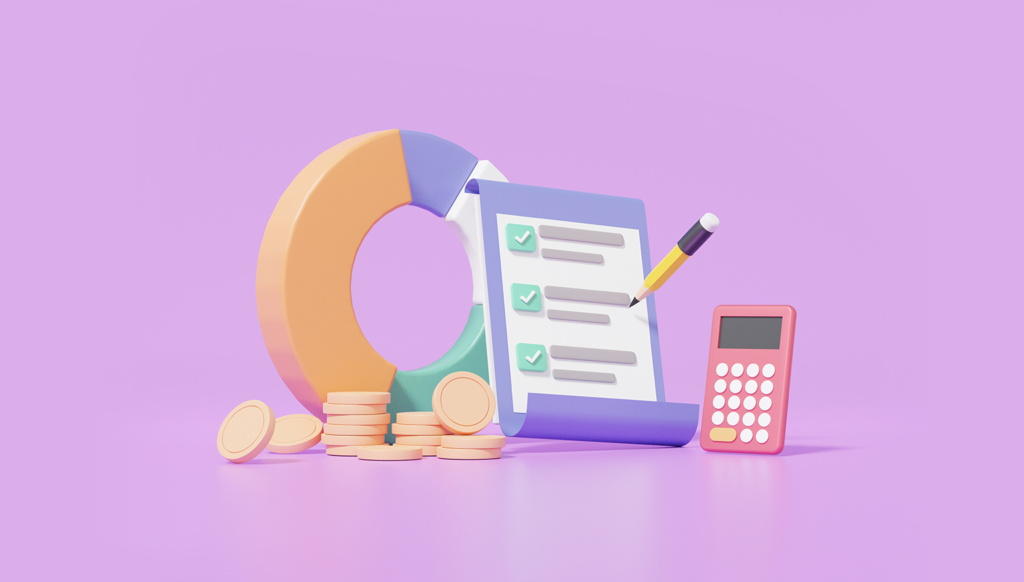Accounts receivable and payable are the two kinds of accounts that organizations must handle. Almost every business has to deal with accounts payable (A/P) and receivable (A/R). A/P and A/R are components of your company’s general ledger, which records all Accounting transactions for your scrutiny.
Accounts payable is a list of all bills you have incurred but still need to pay. It is money owed to vendors, contractors, or other third parties who have supplied goods or services to your company.
Accounts receivable are the businesses or individuals who owe you money (your customers). It is money that clients who have paid for services rendered by your business owe you.
People frequently mix up these two terms since they are so closely linked. This article will help you comprehend the two terms better.
There are two main types of accounts in accounting: liabilities and assets. Assets are items that you own, such as cash or machinery. A liability is anything you owe, such as a mortgage or debt.
Helpful Resource: How to Hire Competent Accountants
what exactly is accounts payable?
Accounts payable is a balance sheet representing money owed to vendors and suppliers. It comprises the costs of running your business, such as paying staff, utilities, and office supplies, as well as purchasing inventory and paying rent.
You might also owe money through credit card transactions or bank or other financial institution loans.
Accounts payable are considered current liabilities in accounting since they are due within one year (or less). Cash on hand and inventory are examples of existing assets; current liabilities include accounts payable and short-term loans.
AP departments typically handle all commercial transactions involving goods or services obtained from third-party vendors.
These transactions include issuing checks for vendor invoices, paying invoices electronically through banking institutions or ACH networks, and ensuring that all payments are appropriately documented in accounting software such as QuickBooks Online or Xero.
How do accounts payable function?
Suppliers typically send bills directly to your company’s accounts payable department. The invoice includes specifics about what was purchased and how much should be paid.
You may have 30 days to pay for goods or services purchased from another company.
If the business owner does not pay within 30 days, they are considered late and may face fines from the provider. If payment is not made within 45 days after receiving the invoice, interest charges may be applied in addition to late costs.
Vendors send invoices to their clients, which is your organization, to begin the account payable process. They anticipate payment within a specific time frame often 30 days after receiving the invoice.
explore more: accrual basis vs cash basis accounting
You must enter these invoices into your accounting system and pay your suppliers as quickly as possible while adhering to their terms and conditions, ensuring that all bills are paid on time.
when should you use accounts payable?
The accounts payable function is crucial to the accounting system of every firm. Accounts payable (A/P) tracks all of your company’s bills, including credit cards and loans.
A/P ensures that you only pay for expenses after they have been incurred. You are not following best practices if you pay a bill after it is due.
Sometimes, you may want to pay an invoice ahead of time. These exceptions, however, are uncommon and should only be used in extraordinary circumstances.
In general, there are four key reasons why organizations should use accounts payable:
Avoiding late fees
If your firm fails to pay its invoices on time, it may face fines or penalties from its vendors, especially if it owes them money for more than 30 days (the legal limit).
Using A/P software can assist in ensuring that your firm pays all vendors on time, eliminating the need to worry about penalties for late payments in the future.
Keeping Track of Spending
Your company may need to track costs to stay on top of its cash flow. This is especially true if you’re a small business or a start-up with a lot of fixed costs and a small amount of money.
Payment tracking can help you manage your cash flow by allowing you to see how much money is coming in and going out at all times.
Avoiding Fraud
You can use accounts payable to ensure that no one in your firm steals from it by making unlawful purchases.
If someone wants to buy anything without getting permission, they can’t use a check or a debit card since they won’t have access to the funds until they first acquire permission from someone else in the firm.
You are in Charge of Cash Flow
Another reason firms may wish to use accounts payable is to manage their cash flow properly.
Suppliers frequently want payment before delivering goods or services, so if you hold until after delivery to make payments, you’ll need a lot of cash to cover these costs.
Instead, firms should keep their accounts payable low by making payments to suppliers as quickly as possible after receiving invoices. When you receive an invoice from a supplier or vendor, this is the optimum opportunity to use accounts payable.
To avoid getting lost in the shuffle, enter the invoice into accounting software as soon as possible after it arrives or take Countick’s expert’s advice. We have bookkeeping and accounting experts who take the load off your shoulders regarding complete accounting services for businesses.
When it’s time to pay the bill, you can enter it as an expense or a reduction in accounts payable. Everything is kept in sync between the two versions this way.
accounts payable examples
Accounts payable records all money owing to suppliers, investors, and creditors. Here are some accounts payable examples:
Suppliers
Invoices from suppliers who provide products or services on credit (usually for 30 days). You must pay these invoices within the agreed-upon time frame or risk losing crucial business partnerships.
Rentals
Rentals include office space and other facilities your company uses, such as equipment, property, and vehicles held by third parties but leased to your company on credit terms (usually 30 days).
If your rental payments are more than 60 days late, your landlord may consider terminating your lease arrangement.
Services
Invoices for services rendered to your company. This can range from office cleaning to gardening. It doesn’t end there; the list includes HVAC repair, repair and maintenance, and other services.
what are accounts receivable?
Accounts receivable (A/R) refers to funds due to a business by consumers who purchased goods or services on credit. The AR balance of a firm is a crucial sign of its health and viability.
The entire amount due by customers for products or services given but not yet paid for is included in the accounts receivable balance.
It does not include cash advances, which customers receive when making credit-based purchases of goods or services. They must immediately repay through automatic withdrawals from their bank accounts.
AR is made when a business sells goods or services on credit to a customer. If a company sells a product or service on credit, the consumer will be invoiced at the time of sale.
This invoice is from a company that does not immediately pay for it. The corporation counts these transactions as sales on its books but does not instantly collect the cash. Instead, it delays reporting the money as revenue until the consumer pays the invoice.
how do accounts receivable function?
When your customers pay for goods or services with credit cards, checks, or electronic payments such as PayPal, the money is deposited into a separate account for each customer. This is known as “Accounts Receivable.”
For example, if you have five clients who each owe $5,000 in accounts receivable, you have a total of $25,000 in funds receivable. This total should be listed on your balance sheet under “Accounts Receivable.”
Using different software or an Online or Excel spreadsheet is a fantastic way to keep track of these accounts. You can track how much each client owes you and how many unpaid invoices there are.
when should you use accounts receivable?
Accounts receivable help keep track of the money that comes into your business. This can ensure that you accomplish your profit targets and have adequate cash flow to keep running without going bankrupt.
Accounts receivable is most commonly used to track customer payments. You can use this data to determine whether your company is successful and whether you need to move towards offers, discounts, or other incentives to encourage fast payments.
Assume you discover that 15% of your clients have fallen behind on their payments. In that instance, you might consider offering a discount for early payment to encourage customers to pay sooner rather than later.
This can boost your company’s profitability by reducing the quantity of money that remains overdue in accounts receivable.
A solid balance between accounts receivable and accounts payable is essential for any business owner.
If you have too much money and no incoming income, you will eventually run out of money and have to close your business or declare bankruptcy. However, how can you pay your bills if no money comes in from sales?
This is why small business owners must maintain track of their A/R and A/P balances at all times so they know where they stand.
explore more: accounting diary entries a, definition examples and instructions
accounts receivable examples
The money that consumers owe you for providing services or goods is known as accounts receivable.
Most firms rely heavily on accounts receivable as a source of working capital. Here are a couple of such examples:
Customers who purchase things on credit have accounts receivable at a retail store. The store records these amounts in its books and pays interest on them until the consumer makes a complete payment.
Following treatment, a doctor’s office bills patients for medical services. If the patient fails to pay within 30 days, the doctor has the right to take the amount from his next bill.
After completing a job, a construction business bills its clients. It maintains these amounts in its accounting records and usually charges interest on them until they are paid in full.
Working Capital, Accounts Payable, and Accounts Receivable
Cash is the lifeblood of a company’s operations. You won’t be able to pay your payments or keep your business operating if you don’t have enough cash.
Even if you are a one-person show with no workers, you will require funds to purchase goods and pay for services done by others.
Working capital refers to the funds available to a company to invest in its operations, pay debts and other responsibilities, or distribute to shareholders. The gap between a company’s current assets and liabilities is its working capital.
reading suggestions: maximizing your financial business success with an accounting firm
Working capital is calculated as follows:
Current Assets – Current Liabilities = Working Capital
To calculate working capital, you must first understand the distinction between account reconciliation, current liabilities, and current assets. One example of a current asset is cash on hand or in a checking account.
- Accounts receivable (money due by customers to a corporation)
- Inventory (finished products for sale)
- Prepaid expenses (pre-purchased items)
Accounts payable (money owed to suppliers or any others), interest-bearing loans (loans with interest payments due), and taxes payable (federal income taxes) are examples of current liabilities.
Working capital is critical in determining a company’s success or failure. It is the difference between a company’s liabilities and assets. Working capital measures how efficiently a company utilizes its assets to create profits.
A company’s industry and stage in its life cycle determine the amount of working capital it needs. Companies in the early phases of development often demand more working capital than mature companies.
Working capital requirements rise as a company grows because it has more inventory to finance and accounts receivable to pay off before getting payment from a customer.
Furthermore, organizations are more likely to incur short-term debt when their sales rapidly expand, or their products have strong returns on investment (ROI).
Accounts payables and receivables are likely the majority of your current liabilities and assets. Therefore, efficiently managing the two is critical to having enough working capital.
accounts payable or accounts receivable: which is more important for your business?
Accounts payable are the funds owed to your suppliers. The money that your clients owe you is known as accounts receivable.
Good accounting records are critical since they affect your company’s cash flow. The answer to this question is dependent on your industry.
For example, if you own a tiny business with no debt and only cash on hand, you probably don’t need to be concerned with accounts receivable.
Accounts payable is a key financial activity that must be appropriately managed if you are a large organization with hundreds of suppliers and vendors and millions in outstanding invoices.
In other words, it’s not an either/or issue; accounts payable and receivable are both necessary.




